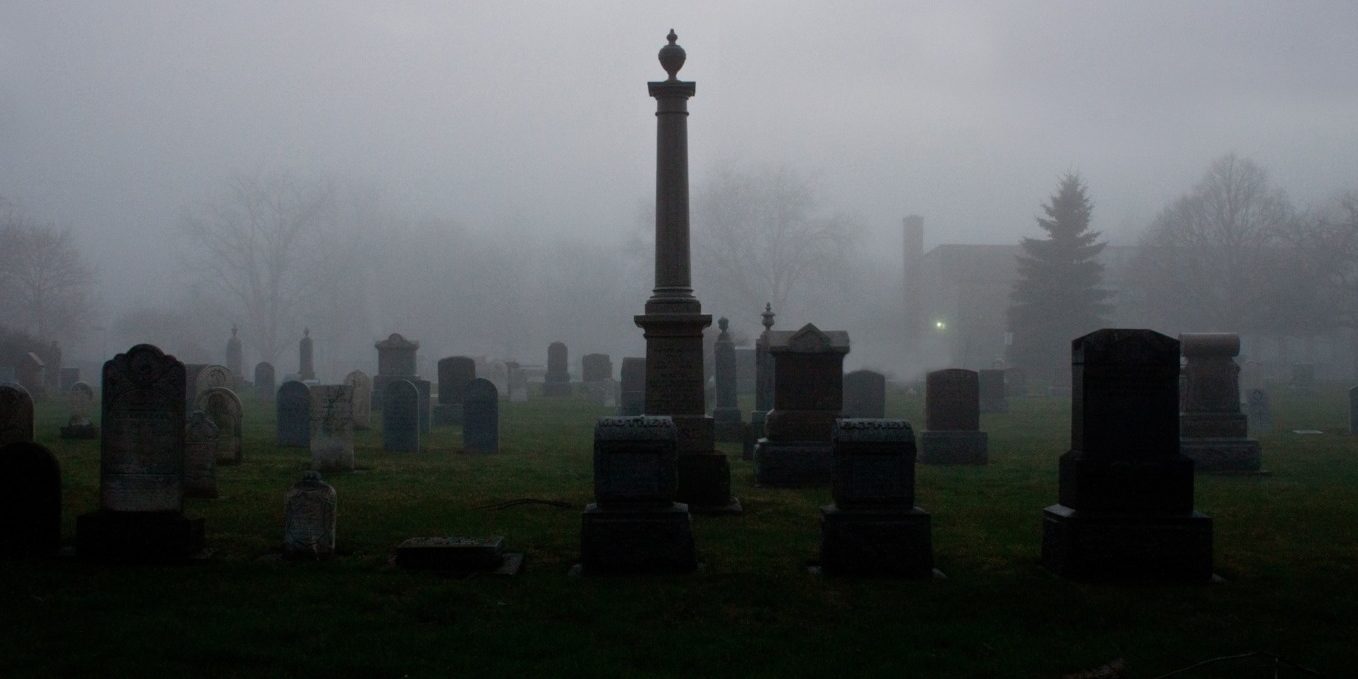Why is ‘Pet Sematary’ so effective?
A new adaptation of Stephen King’s Pet Sematary has just hit cinema screens, terrifying a whole new generation with the knowledge that “sometimes, dead is better”. King has gone on record saying that of all the novels he has written, this is the one which scared him the most and that it was too dark for readers (on a personal note, it is one of only two stories to have ever given me nightmares). It is one of King’s biggest hits, however, and it remains popular to this day, so what is it that makes the book so effective?
Spoilers for the whole book follow – if you haven’t read it (and I really recommend that you do) and you don’t want the story to be ruined, please don’t read on.
The story follows the Creed family – father Louis, mother Rachel, two children Ellie and Gage and their cat Church – who move to a small town in Maine. They befriend their new neighbour, an elderly man called Jud Crandall, who shows them a local landmark of a pet cemetery where the town’s children bury their animals. Louis, a doctor, suffers a traumatic experience after a young student dies in the first week of classes, and Rachel is haunted by memories of a death from her past.
A lot of the strength of Pet Sematary comes from the fact that the horror is used sparingly and effectively
Death follows the family as Jud’s wife suffers a near-fatal heart attack and Church is run over outside the house. A sympathetic Jud shows him the real cemetery, an ancient burial ground that brings back the dead. Louis is troubled by his resurrection of Church but, after two-year-old Gage is killed in a horrible accident, the power of the cemetery calls him to save his child, triggering a turn of events that has drastic consequences for the Creeds.
Although this is a Stephen King book and thus horror is essentially a given, a lot of the strength of Pet Sematary comes from the fact that the horror is used sparingly and effectively (until the book’s final quarter, when it goes out and out). The book takes a lot of time to develop the Creeds and the Crandalls, making them characters that we care about – of particular note is the father-son relationship that grows between Louis and Jud. Jud is a key character: a kind-hearted old man who knows the power of the cemetery, who is torn between his growing affection for the Creeds and the potential nightmarish consequences of exposing them to this power.
Until the finale, the book is generally creepy and atmospheric in the way it deals with death. A central theme of the book is the way people deal with grief, or more accurately, how they refuse to deal with it. That refusal makes up a feeling of safety, but it is just that – a feeling, an illusion. Jud is suffering from the knowledge that his beloved wife Norma is soon to die (as she does partway through the book), and Rachel is haunted by the death of her sister Zelda when they were both children.
His spiral into insanity comes with the terrifying realisation that his delusions and attempts to rationalise his actions are only contributing further to that spiral
Louis initially accepts death as a natural part of life but after the death of the student Victor Pascow and the resurrection of Church, his beliefs are challenged. Although Jud wants to “do (Louis) a favour” by bringing Church back, their actions are the beginning of Louis’ unravelling as a person. The character’s lives are built on illusions and when these illusions start to break down, so does their happiness.
There is one optimistic scene in the novel where Louis takes Gage to fly a kite. However, King tells us that Gage has only a few months left to live, rendering it bitterly sad. Gage’s death is horrific both because it involves the death of a child but also because King has really prepared the groundwork: we know what Louis will do and we know why it is a bad idea. The image of a spiral recurs throughout Pet Sematary, emphasising the inevitability of Louis’ actions. Although his mind warns him against resurrecting Gage, Louis knows that he has no choice, and his spiral into insanity comes with the terrifying realisation that his delusions and attempts to rationalise his actions are only contributing further to that spiral.
The refusal to accept it drives the novel and the attempts to circumvent it lead to the horror
King follows the novel’s dark themes to a horrifying climax after Gage returns from the dead. It is here that Pet Sematary becomes outright horror as Gage slaughters Jud and Rachel before Louis tries to atone by killing both him and Church. But that contrition only stretches so far. He then tries to bring Rachel back, desperately attempting to reason that this time, it will be different. It ends as the undead Rachel returns home, her dead hands reaching for the now-insane Louis, presumably to kill him. “‘Darling,’ it said” is the chilling final sentence which indicates that it is the cemetery that has won. We are at the bottom of the spiral, a bleak climax to a bleak book.
Pet Sematary works so well because it is really a human story and the horror elements serve to accentuate the human drama. Death is something that touches everybody’s life. The refusal to accept it drives the novel and the attempts to circumvent it lead to the horror. This is a very dark book but undoubtedly one of King’s best, and I recommend giving it a read.

Comments